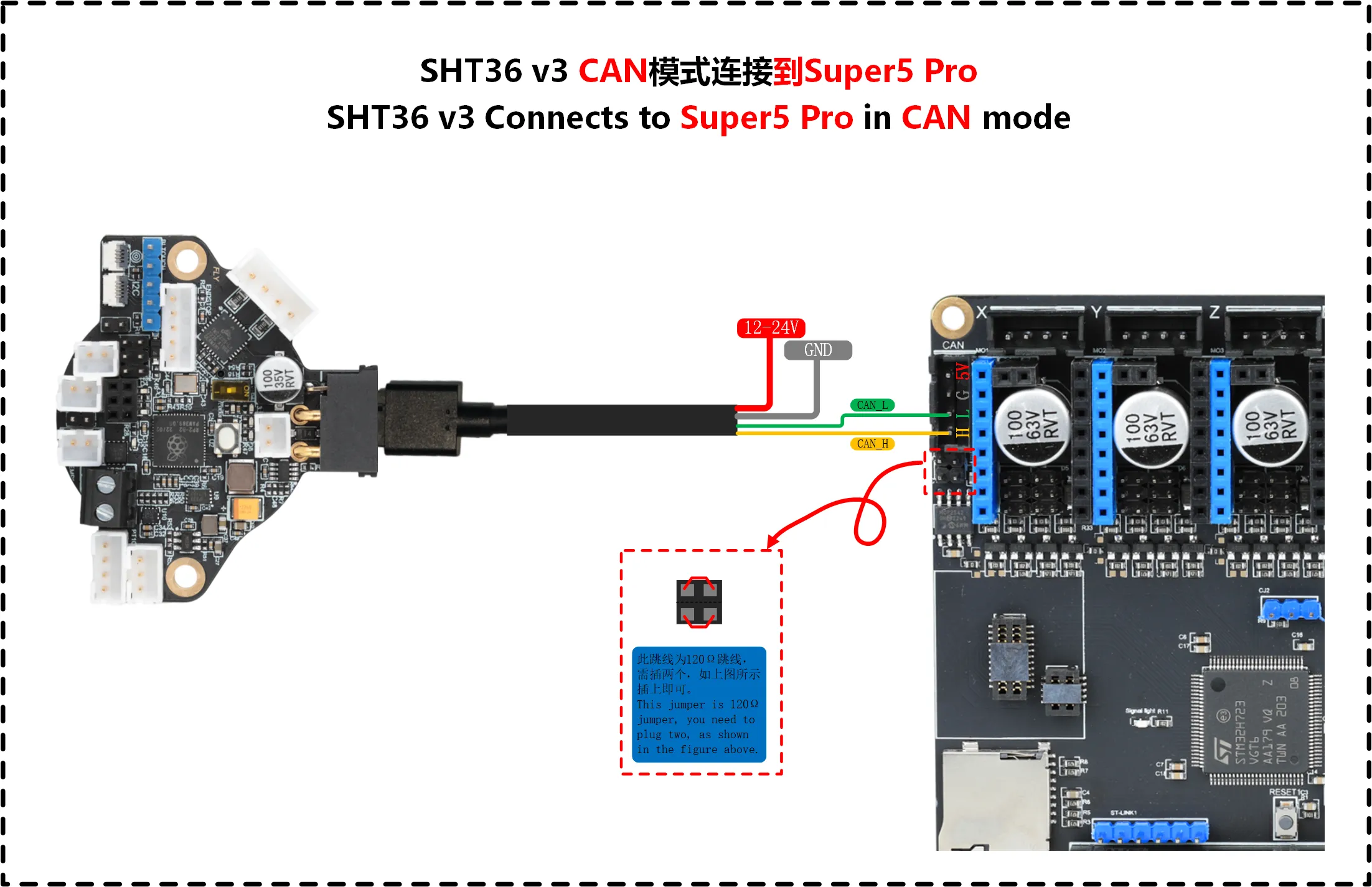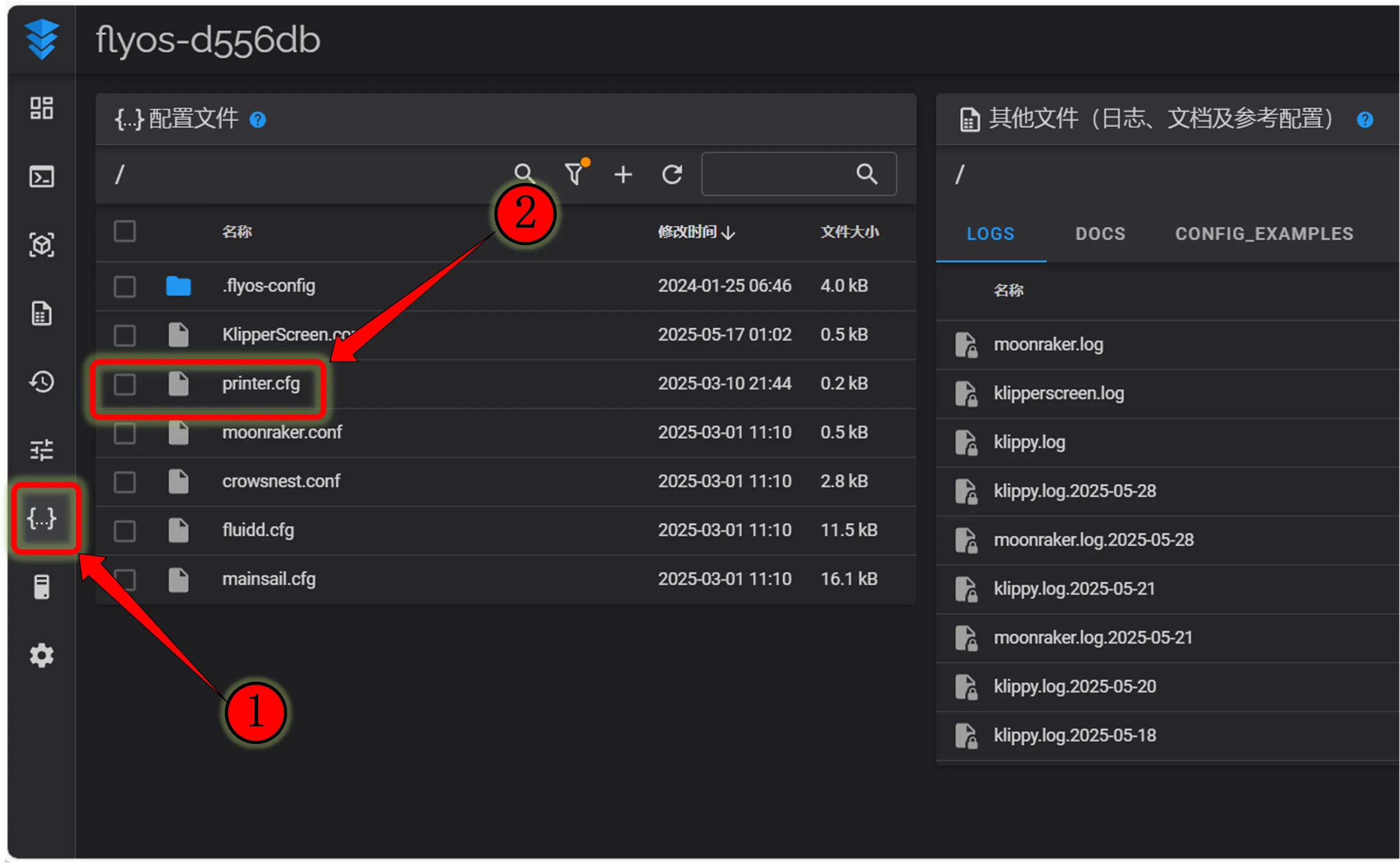CAN Bridge
CAN bus is a serial communication protocol bus used for real-time applications, which can transmit signals using twisted-pair wires and is one of the most widely used field buses in the world. The CAN protocol is used for communication between various different components in a car, replacing expensive and bulky wiring harnesses. The robustness of the protocol extends its use to other automation and industrial applications. Features of the CAN protocol include serial data communication with integrity, provision of real-time support, transmission rates up to 1Mb/s, along with 11-bit addressing and error detection capabilities. On 3D printers, CAN bus is used to reduce the number of wires connecting the print head to the motherboard. Originally, it required dozens of wires, but with CAN, only four wires are needed, significantly reducing the number of wires and lowering the difficulty of wiring. This chapter briefly outlines the use of bridging CAN.
Tool board uses CAN to connect to the mainboard
- Please note that the power line of the tool board is not connected to the CAN port, but to the 12V-24V power line.

Flashing the mainboard firmware
- Ensure that the firmware burned onto the SUPER5 PRO mainboard is
USB bridge CAN firmware configuration.
Searching for ID
CAN Configuration and ID Search
- If you need to use CAN, make sure your host computer has performed CAN configuration
Make sure the mainboard is connected to the host computer before proceeding with the following operations
Ensure that the CAN network of the host computer, the CAN speed of the bridge mainboard, and the CAN tool board's speed are completely consistent
Precautions Before Searching for Devices
- Before searching for CAN ID, please connect to SSH
- Please note that you need to log in to SSH via the network, not via the serial port
- Make sure you have connected the UTOC or flashed the CAN bridge firmware on the mainboard, and ensure that the data cable connected to the host computer has data transmission functionality
Search for Devices
- Now that you have successfully logged in to the host computer, you can enter
lsusbto search for devices, which will result in one of the following situations- Entering
lsusbprompts that thelscommand is not found, then you can enter the following command to install the commandsudo apt-get install usbutils - Entering
lsusbresults in no response, this is a system issue, we cannot do anything about it, you need to change the system or use a confirmed normal system - The information in the image below appears, please note that this is just a reference. You only need to confirm that
1d50:606fappears
- Entering
1d50:606fis the device you need to use this time- If there are multiple
1d50:606f, it is recommended to exclude one, otherwise it may affect subsequent burning and firmware connection. For example,FLY MINI PADis recommended to use the built-in UTOC instead of other CAN bridge devices - If not, please check yourself whether the data cable is connected properly and whether the firmware is flashed correctly.
You can only search for CAN ID when there is 1d50:606f
Search for CAN ID
- Enter the following command to search for ID
~/klippy-env/bin/python ~/klipper/scripts/canbus_query.py can0
- FAST system uses the following command
python ~/klipper/scripts/canbus_query.py can0
- If an ID appears and the
Application:at the end showsKlipper, it means this ID can be used directly - If an ID appears and the
Application:at the end showsCANBOOTorKatapult, it means the firmware needs to be flashed before it can be used
CAN Problem Collection
- If you cannot find the CAN ID, please see the following document
- CAN Problem Collection
Enter the CAN ID into the configuration
 |
 |
-
Copy the queried UUID and enter it into the
canbus_uuid:node under the[mcu]section in theprinter.cfgconfiguration. After saving and restarting, the mainboard can be connected. If Klipper indicates that the firmware needs to be updated, ADC error etc., it means Klipper has already connected to the mainboard -
If
Application:shows Canboot, it cannot be configured into the configuration, and you need to flash the Klipper firmware to proceed dangerous
dangerousNote: All IDs mentioned in the document are examples. The actual ID of each mainboard is different. Please modify and fill in according to the actual obtained ID.
-
The following is a reference configuration
dangerous[mcu]
canbus_uuid: <Replace this with the ID you just queried>- The following is a reference configuration for a mainboard plus a toolboard
- If it is a mainboard ID, it must be
[mcu]pluscanbus_uuid:plus the ID you searched for - If it is a toolboard, it must be
[mcu toolboard name]pluscanbus_uuid:plus the ID you searched for